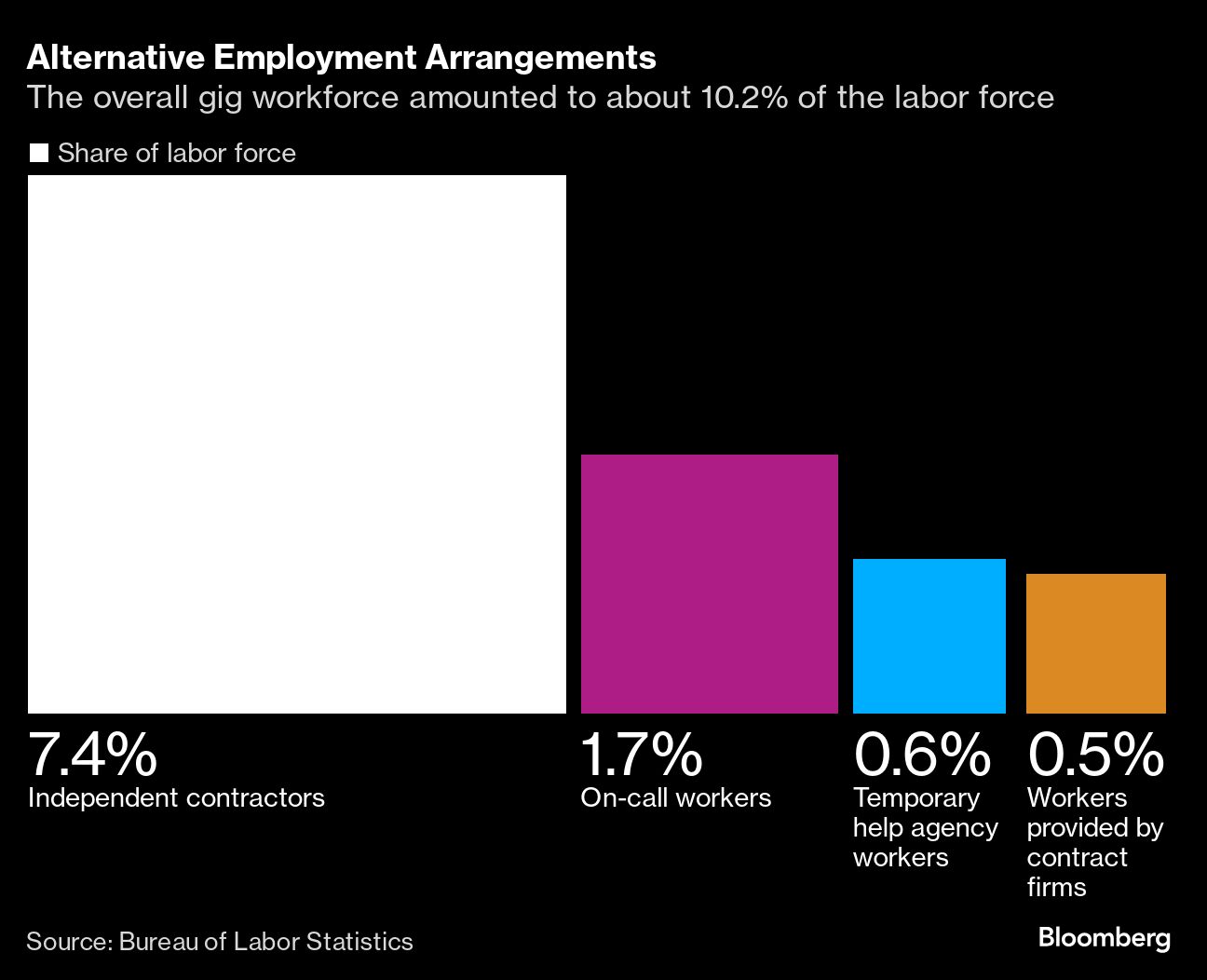
(Nov 9): About one-tenth of the US labour force is working in the gig economy, a share that’s held steady from the pre-pandemic years, a new government study found.
The so-called gig economy employs some 15.5 million people or 10.2% of the labour force, according to a Bureau of Labor Statistics (BLS) report published on Friday that’s based on a special supplement to the Current Population Survey for July 2023. The last time the bureau reported on contingent and alternative employment was in May 2017, when it found a 10.1% share.
In the intervening period, Covid upended the job market and some analysts predicted it would expand the gig workforce. But even if there was such an impact, there’s no evidence it lasted through 2023, the new study shows.
The Labor Department survey identifies four alternative employment arrangements. The largest category is independent contractors, including consultants and freelancers, who are typically older than other contingent workers.
The other categories are on-call workers, who report to work only when summoned; temporary help agency workers; and workers employed by contract companies.
Overall, the youngest Americans in the labour force were four times more likely to have contingent jobs than older cohorts, according to the report. The share for worker between 16 and 24 years old was 12.9%, compared with 3.1% for prime-age workers between 25 and 54.
In a shift since the 2017 report, the share of contingent workers who said they would prefer a permanent job declined to 45%, from just over half in the earlier survey.
The BLS data is not seasonally adjusted, which may affect comparisons with the earlier survey since there’s a seasonal element to some types of contingent employment. For example, people who are on-call as substitute teachers may not be working during the summer holidays.
The July 2023 survey that forms the basis of the new report also included questions on digital platform employment or app-based work, which aren’t included in Friday’s release. The BLS plans to publish estimates for those categories in a future analysis. The bureau didn’t publish state-by-state numbers because the sample size wasn’t large enough.
Uploaded by Felyx Teoh

